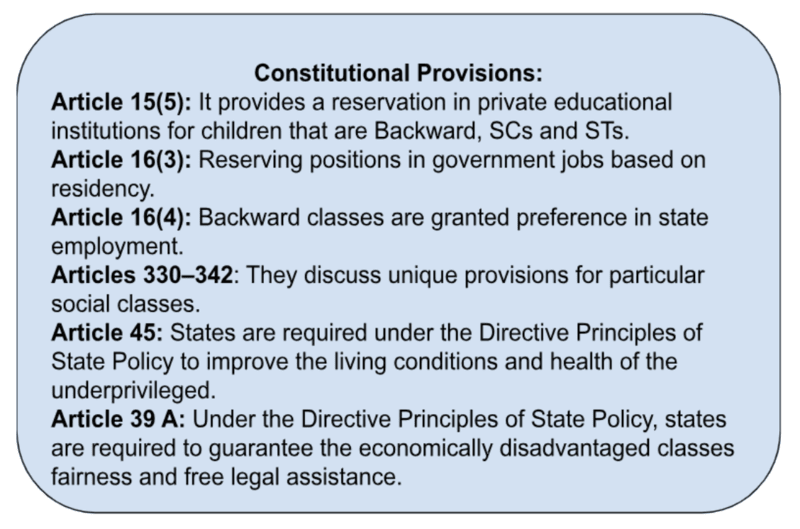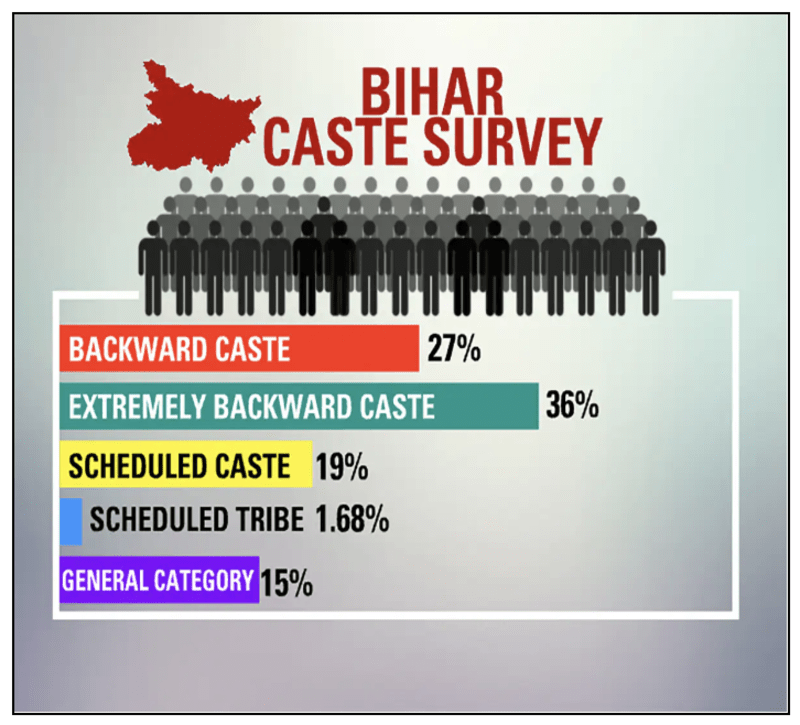GS Paper II
News Excerpt:
The Bihar Cabinet has approved a proposal to increase reservations in the State to 65% from the current 50% quota, crossing the ceiling set by the Supreme Court of India.
More on the news:
- After the caste survey report was recently tabled in the Bihar assembly, there are demands for the quotas for Other Backward Classes (OBCs), Extremely Backward Classes (EBCs), Scheduled Castes (SCs) and Scheduled Tribes (STs) to be raised.
- The detailed report on the caste survey tabled in the House included both social and economic data.
- These proposed hikes exclude the 10% reservation for Economically Weaker Sections (EWS).
- With the EWS quota, Bihar’s proposed reservation will go up to 75%, well past the 50% ceiling on reservations set by the Supreme Court.
What is the ceiling set by the SC?
Indra Sawhney v. Union of India, 1992: In the case, a 9-judge bench of the Supreme Court upheld the 50% ceiling on reservations, denied reservations in promotions, and laid down indicators to ascertain backwardness. It is the most well-known judgment on the reservation.

Quota Status:

Caste survey findings:

Economic Data:
- 34% of households in the state earn ₹6,000 or less each month.
- Nearly 28% live on income between ₹ 10,000 and ₹ 50,000, and only less than 4% earn over ₹ 50,000 per month.
- Overall, the State has 94 lakh poor families.
- Over 42% of families from Scheduled Castes and Scheduled Tribes are poor, as are over 33% of those from Backward and Extremely Backward Classes.
- Only 25.09 % of General Category families are listed as poor.
Literacy Data:
- The overall literacy rate in the state is 79.7%.
- The literacy rate is higher in women as compared to men. For every 1,000 males, there are 953 literate females.
Mains PYQ
Q. “Caste system is assuming new identities and associational forms. Hence, the caste system cannot be eradicated in India.” (UPSC 2018)


